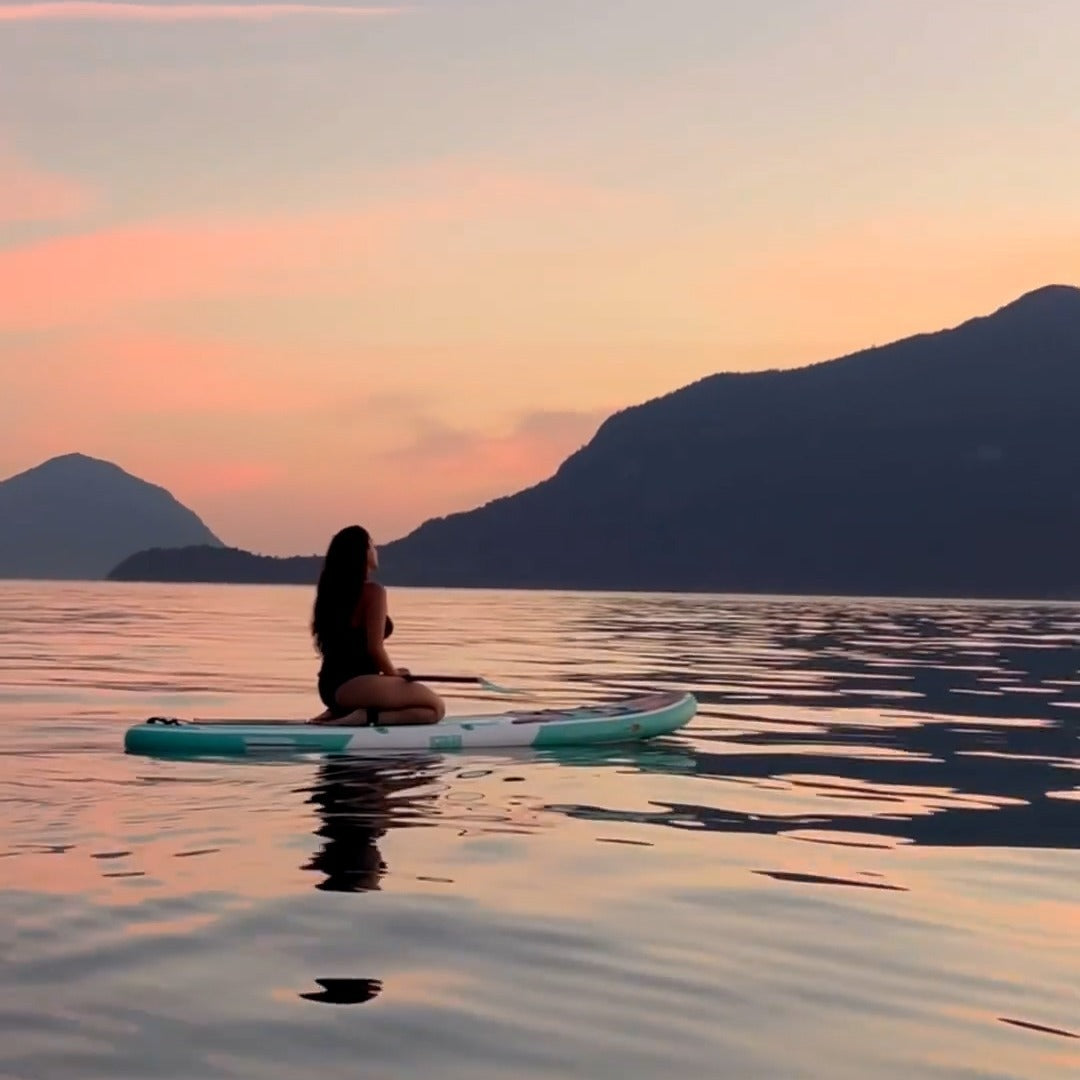
The Best Inflatable Paddle Board Tips You Need to Know
Share
How to dress for stand-up paddling?
The clothing you need to wear for stand-up paddleboarding depends largely on the actual temperature and the probability of falling into the water.
If the temperature is warmer: On a warm summer day, feel free to wear a swimsuit and paddle barefoot. You can also wear water sports shoes or sailing shoes.
If the temperatures are cooler: When temperatures are cooler, you may want to wear a wetsuit. But a wetsuit only provides actual warmth when submerged in water. This attire is a great choice if you are a beginner and it is obvious that you could fall overboard at any time. But if you rarely get in the water, your wetsuit will just get soaked and stuck to you with sweat.
Synthetic Fabric Options: If you are already proficient in SUP riding and do not anticipate falling overboard from your board at any time, you may choose to wear a drysuit or other waterproof clothing. The trick to choosing is to keep your outfits as layered as possible. Opt for a base layer made of synthetic fibers such as polypropylene or polyester. For a hydrophobic layer, choose fleece made from thick polyester fabric. Wear a waterproof jacket over the outermost layer to maintain a complete seal.
You’ll also want to put on some pants! Synthetic tights underneath and a pair of waterproof legs keep you dry. If you enjoy wading, invest in a pair of waterproof paddling gloves to keep your fingers warm.

Safety Tips:
- Can you swim? To avoid falling into deep water, you must learn to swim.
- Be sure to wear a life jacket and paddle! Paddling without a life jacket is illegal in some areas. Please check with local authorities, but life jackets are generally recommended.
- Remember to wear sunscreen as the water will reflect the sun!
- Never paddle while drunk.
- Even in hot weather, make sure you're well-dressed to prevent falling into the water.
- Beginners should never paddle alone in remote waters.
- Always choose to paddle in waters where you can swim safely.
- Please choose a calm lake or river to practice paddling.
- Check the wind direction for paddling! Going against the wind can be tough. If the wind is too strong, kneel down and paddle until the wind calms down.

